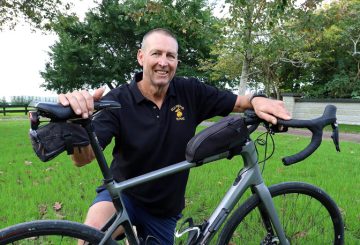Proyek Atlas Burung Selandia Baru telah berhasil diselesaikan setelah lima tahun, dari 2019 hingga 2024. Komunitas yang terlibat dalam proyek mengamati 309 spesies burung selama periode ini. Spesies yang paling umum adalah pahirini/chaffinch, manu pango/blackbird, dan tauhou/silvereye.
Proyek ini, salah satu inisiatif ilmu komunitas terbesar di Selandia Baru, dikoordinasikan oleh Wildlife Management International Limited for Birds New Zealand. Lebih dari 441.000 daftar periksa dan 145.000 jam kerja disumbangkan oleh pengamat burung sukarelawan di seluruh negeri. Mereka menggunakan platform ilmu komunitas, eBird, untuk mengunggah pengamatan mereka.
Tujuan proyek ini adalah untuk mengamati semua kemungkinan spesies burung dalam kotak grid yang mencakup seluruh negara, menurut Ketua Tim Koordinasi Atlas Dan Burgin. Lebih dari 3.232 kotak grid, masing-masing 10 x 10 km, disiapkan untuk memandu surveyor.
Proyek ini berakhir dengan lebih dari 97,3% dari kotak ini telah menerima data pengamatan burung. Upaya masyarakat didukung oleh data yang diunggah oleh Departemen Konservasi, beberapa dewan regional, Lingkungan Canterbury, Lingkungan Southland, dan organisasi lainnya. Toi Toi Wines juga mendanai enam ekspedisi Atlas untuk menargetkan area yang kurang disurvei dan meningkatkan cakupan.
Proyek ini bertujuan untuk mengumpulkan informasi terkini tentang spesies burung di Selandia Baru untuk menginformasikan keputusan konservasi di masa depan dan mencegah lebih banyak spesies mendekati kepunahan. Tujuan ini dicapai dengan cakupan luas dan jumlah daftar periksa yang dikirimkan.
Data dari proyek ini akan memungkinkan perbandingan distribusi burung dengan kumpulan data proyek Atlas sebelumnya, mengungkapkan perubahan nasional dalam distribusi burung dalam skala waktu yang besar.
Proyek Atlas ini adalah yang pertama menjadi proyek digital pertama, berkat kemitraan dengan Cornell Lab of Ornithology. Aplikasi eBird memungkinkan entri dan output data real-time, memungkinkan komunitas untuk memasukkan pengamatan secara langsung dan mengikuti hasil di seluruh proyek.
Terlepas dari tantangan seperti pandemi global dan meningkatnya biaya hidup, masyarakat menyumbangkan kumpulan data yang mengesankan dan signifikan secara nasional. Lebih banyak hasil akan dipresentasikan pada konferensi tahunan Birds New Zealand dan dalam e-book yang akan diterbitkan tahun depan. Presiden Birds New Zealand, Bruce McKinlay, memuji pencapaian komunitas tersebut, dengan menyatakan bahwa hal itu akan memiliki dampak positif yang bertahan lama pada penelitian dan konservasi burung di Selandia Baru.




















































(1)-360x245.jpg)









